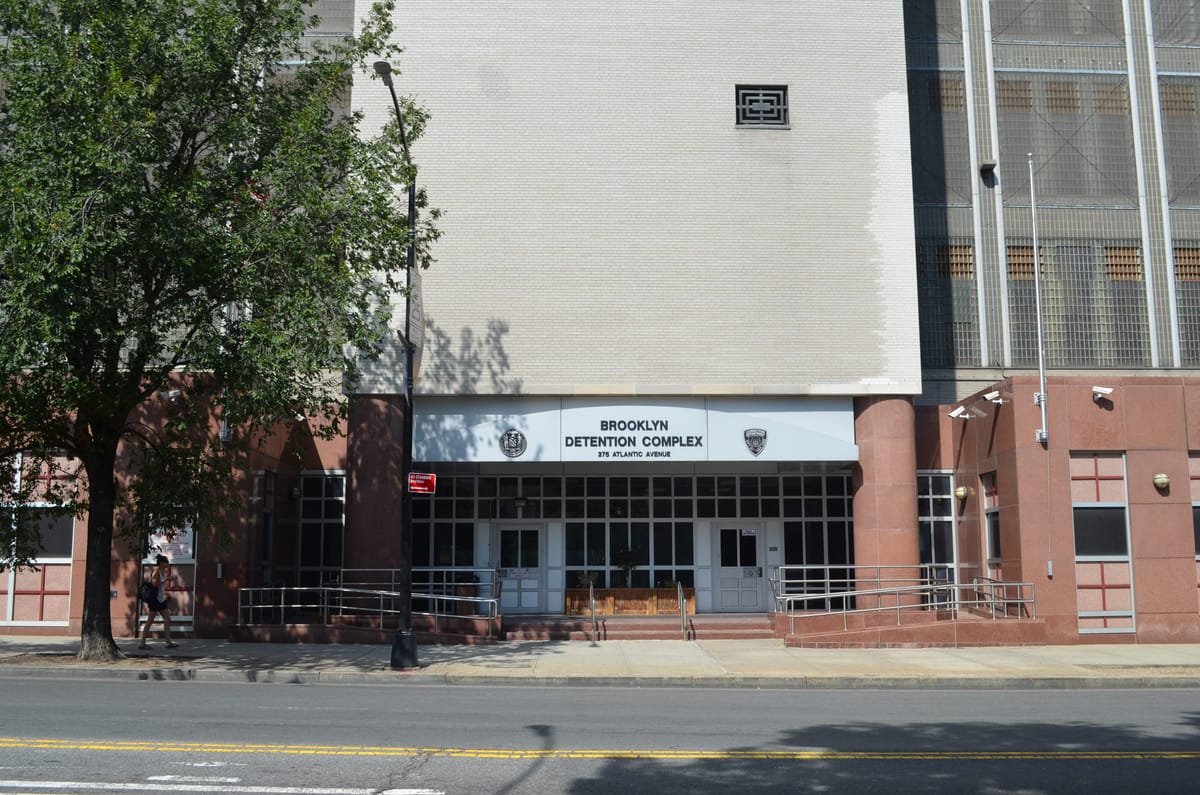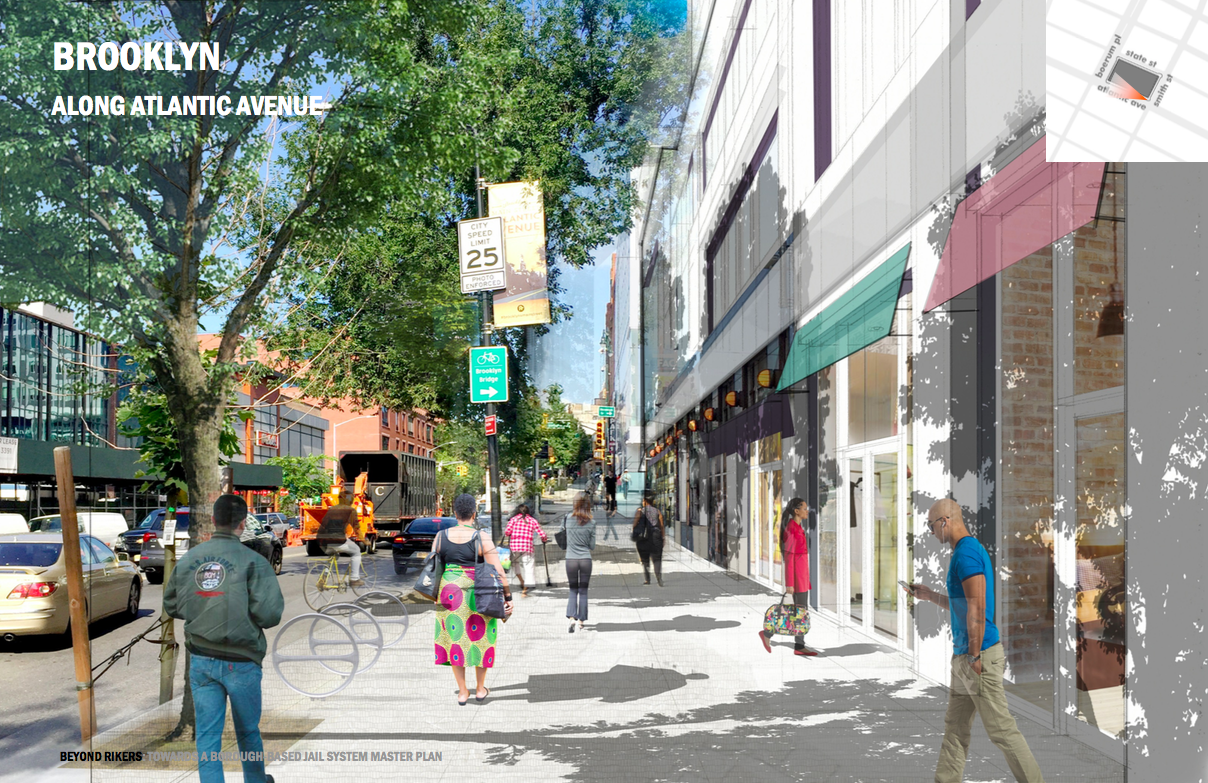CB2 Land Use Committee Votes To Approve Atlantic Ave Jail Plan With Conditions

BOERUM HILL – The Brooklyn Community Board 2 (CB2) Land Use Committee voted to approve, with conditions, the City’s ULURP application for the Brooklyn Detention Center at 275 Atlantic Avenue.

The committee voted ten in favor, one opposed, for a motion during a meeting Thursday evening at NYU Tandon School of Engineering (5 MetroTech Center). The motion approves the ULURP (Uniform Land Use Review Procedure) application to locate a jail at 275 Atlantic Avenue; approves the text amendment creating a jail special permit; approves the map change allowing for a tunnel below ground; and approves the text amendment creating a jail special permit with the following conditions:
- That the Brooklyn facility be built with 10 FAR [Floor Area Ratio] or less and have a capacity of 875 with the proposed improved interior spaces and ground floor retail
- The City expand alternative sentencing programs (such as the successful Red Hook Criminal Justice Center) and expand and sustain programs that provide youth in the most impacted communities with educational and economic opportunities
- The City create a training facility for corrections officers that will allow the culture of the new jails to be changed
- A new jail be developed in Staten Island, consistent with de-carceration efforts and the Lippman Commission’s report, which recommends that new jails be close to families of detainees and to courts.
Mayor de Blasio committed in 2017 to close Rikers Island by 2027 and replace the facility with four new or renovated “modern and humane” borough-based jails in Brooklyn, the Bronx, Manhattan, and Queens. The plan would reduce the current jail population from 7,800 to 5,000 and house individuals in smaller facilities closer to courthouses, healthcare facilities, and detainees’ families. Advocates argue that with recently passed reforms, the number of incarcerated individuals could decrease further to 3,500.
If the plan is approved, the existing Brooklyn Detention Center at 275 Atlantic Avenue will be demolished and rebuilt to a height of 395 feet with capacity for 1,437. The building will feature 30,000 square feet of ground-level community and/or commercial space as well as parking for 292 employees.
As part of the ULURP process, CB2 has 60 days to collect public feedback and issue a recommendation on the plan. The board hosted a hearing on the Brooklyn detention center last Thursday, April 11. The full Community Board 2 will vote on the recommendation on Wednesday, May 8 during the board’s general meeting at New York City of Technology, 259 Adams Street (at Tillary Street). Community board decisions are advisory only.

Prior to Thursday’s vote, Land-Use Committee Chair, Carlton Gordon, inquired where individuals at the Brooklyn center will be placed during the proposed construction.
While an “exact movement plan” hasn’t been devised yet, incarcerated individuals will be relocated to existing facilities, including the barge in the Bronx or Rikers Island, said Brenda Cooke, Chief of Staff for the Department of Corrections. “We would move folks around accordingly and move everyone off Rikers Island” once the new facilities are completed.
The city was given approval by New York State to use the design-build approach for the project, explained a representative for the Deputy Mayor for Operations. “That allows us to do design and construction in one contract,” she said. “What that means is, should we get this approval, we’re able to procure a design and construction team in one procurement and then move forward. We’re hoping to have all those contracts in place by the end of 2021.”
Last year, the NYS Senate authorized the city to use the design-build process on the Brooklyn-Queens Expressway (BQE) rehabilitation, potentially shortening that project’s timeline by two years.
Depending on how the ULURP process goes, Requests for Proposals will be released at the end of this year, said Rebecca Clough, Associate Commissioner of the Department of Design and Construction (DDC). “We’re going to stagger the buildings, possibly finishing up [by] 2027, but we’re going to try reduce that,” she said. “As the [jail] population reduces we may be making smaller buildings, so that’s the timeline right now.” Clough noted it is difficult to accurately predict the length of the borough-based jail project since the city has never used design-build before, but added that she anticipates “the design and construction portion will be about five years.”
“We have not actually made a decision of the best way to do it, whether it’s one contract to hire four, or four contracts to hire four,” Clough said, noting that a Program Manager had recently been brought on board to help guide the city efficiently through the design-build process.
The citywide plan includes a women-only facility in Queens to house the system’s 200 female detainees. Dana Kaplan, Deputy Director, NYC Mayor’s Office of Criminal Justice, noted that a feasibility study is currently taking place to determine how to handle individuals with mental health concerns. “We are conducting a feasibility study right now to look at whether it’s possible to relocate a sub-population of the people who are in detention that have particularly acute mental health [and] substance abuse needs in more hospital-like environments in or adjacent to an existing hospital facility,” she said.
Of the system’s current population of approximately 7,700, “17% are diagnosed with a serious mental illness,” she added, while “45% of our population have had interactions with mental health clinicians.”
After CB2 issues a recommendation on the plan, Brooklyn Borough President Eric Adams will have 30 days to hold a public hearing and make his recommendation. Adams’ public hearing is tentatively scheduled for Thursday, June 6th. The City Planning Commission will then have 60 days to host a public hearing and follow-up reviews before voting on the plan. The City Council will then have 50 days to review and vote.




